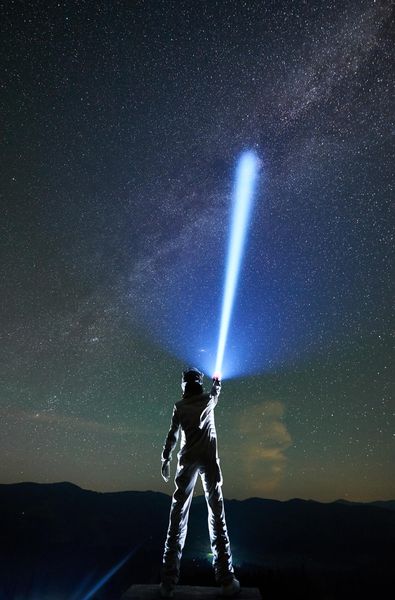From Fantasy to Reality: The Evolution of Replica Lightsabers

The Star Wars lightsaber is one of the sci-fi weapons that have captured the imaginations of fans of different generations and walks of life. This enduring appeal of lightsabers is what led to the birth of a market for replica lightsabers, and today (nearly four decades after the first lightsaber toys hit the shelves), many Force faithful still continue to wrap their hands around replicas of this elegant weapon for a more civilised age.
The Star Wars lightsaber is one of the sci-fi weapons that have captured the imaginations of fans of different generations and walks of life. This enduring appeal of lightsabers is what led to the birth of a market for replica lightsabers, and today (nearly four decades after the first lightsaber toys hit the shelves), many Force faithful still continue to wrap their hands around replicas of this elegant weapon for a more civilised age.
As one of the most beloved toys in history, replica lightsabers have really come a long way, and in this piece, we shall be taking a look at their evolution from the blow-up inflatable toys we had in the 70s to the high-end sophisticated, screen accurate models we have on the market today. Owning your favorite character’s lightsaber is not just a symbol of fandom, but a tangible connection to a galaxy far, far away that ignites the imagination and brings the power of the Force into your hands.
Replica Lightsabers: What They Used to Be Like
The first lightsaber toys officially hit the market in 1978 (over a year after the first Star Wars film was released) when Kenner (an American toy company) decided to meet the needs of Star Wars fans looking to live out their Jedi fantasies by wielding a lightsaber. These first lightsaber toys weren’t much in terms of appearance- they were basically just inflatable yellow vinyl tubes connected to a flashlight, and as you can imagine, they weren’t in any way suitable for the sparring fun fans wanted.
However, with the release of The Empire Strikes Back (which was a game-changer), these toy sabers were reimagined, and the ‘The Force Lightsaber’ was introduced to fans in 1981. This toy featured either a red or yellow plastic tube that was over 3 feet long. The end of each saber blade had little holes, which allowed them to make whistling noises (which sounded surprisingly similar to a saber’s hum) whenever they were swung. This Force Lightsaber continued on the market throughout the Return of the Jedi years, although the yellow blade colour got traded for neon green.
Fast forward to 1996, electronic lightsabers from Hasbro (the company that purchased Kenner) hit the market. These replica lightsabers were much more sophisticated, with extendable blades and hilts modeled after Luke Skywalker and Darth Vader’s blades. They also had authentic movie sounds and a light-up feature that basically set the tone for many of the replica lightsaber models that came after them.
With 1999, came the arrival of Star Wars: Episode I-The Phantom Menace, which gave fans their first look at the menacing Sith Lord Darth Maul and his unique dual-bladed lightsaber. Darth Maul’s lightsaber was the coolest lightsaber fans had seen up to that point, and the Darth Maul Lightsaber replica that followed definitely changed the replica lightsaber game with features like a fully retractable five-feet-long blade (the measurement from the tip of one blade to the other), strobe lights that flashed on contact with other sabers, and actual cinematic sound effects.
Modern Replica Lightsabers
The Star Wars prequel era saw a lot of upgrades to lightsaber replicas, from basic non-electronic lightsaber toys to top-tier replica sabers modeled after iconic characters like Mace Windu and Count Dooku.
Replica lightsabers have since continued to evolve into snazzier high-end models with upgrades such as; stronger and sturdier hilts (aluminium alloy, 3D printed plastic hilts), intricate hilt designs, removable heavy-grade polycarbonate blades, LED blade lights, RGB colour-changing, motion-sensitive sound effects, power saving abilities and saber accessories (couplers, blade plugs, hilt wraps, saber stands, saber cases, pommels, and belt clips).
The popularity of replica lightsaber customisation has also made it easier for collectors and cosplayers to diversify their collections and perfect their cosplays.
Conclusion
For the longest time, replica lightsabers have provided a way for Star Wars fans to live out many of their Star Wars fantasies and connect with the Force. As one of the most beloved props from the franchise, replica lightsabers have had to evolve from inflatable plastic toys to the high-end sophisticated blades that we have today.